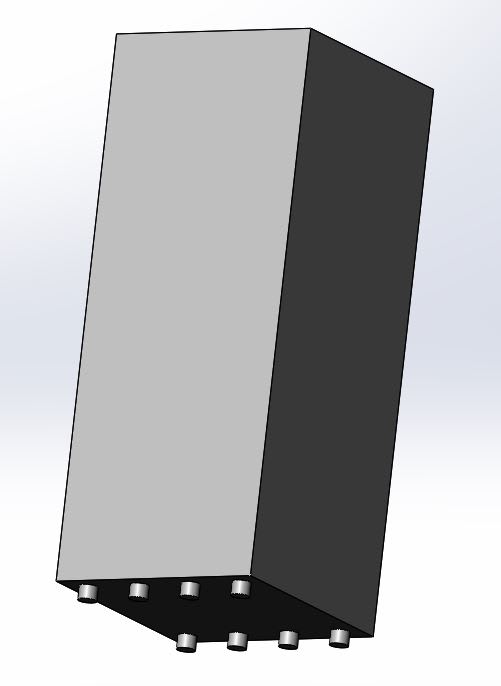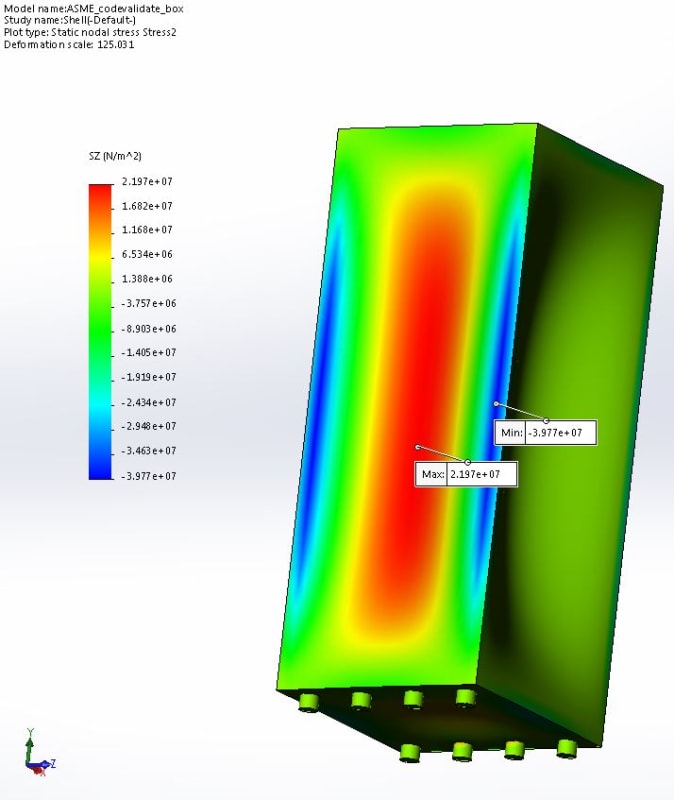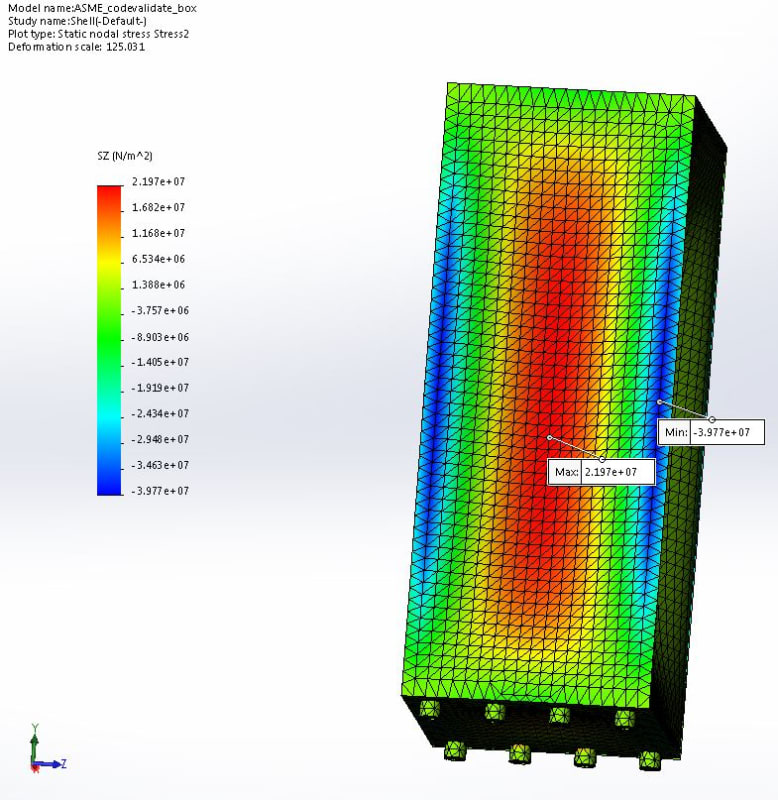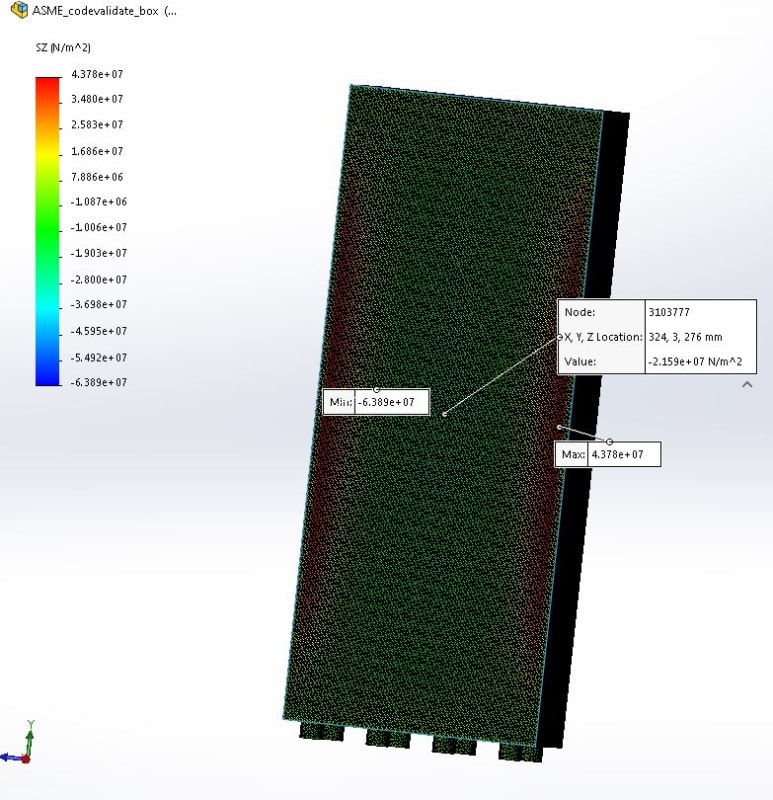LearningENG-
Mechanical
- Jan 17, 2020
- 25
Hi I’m trying to verify in FEA my hand calculation of a rectangular chamber subjected to external pressure.
It's a chamber with rectangular cross section (see attached picture) whose inner dim. are 22"*24"*57.25". It has equal wall thickness of 0.75". The material is Aluminum 6061 T6 with a yield strength of 276 Mpa and Young's modulus of 68.9 Gpa. When running the simulation, I applied uniformly distributed external pressure of 101 kpa while fixing the bottom faces of the supporting feet. I applied shell elements for the walls and solid elements for the feet.
I'm currently comparing the bending stress between ASME VIII 13 and FEA (the normal stress in X & Z directions respectively, and Solidworks actually allows me to show "bending stress" for shell elements) and I got the following:
ASME results (compared with FEA):
Long side: SbN = 29.81 Mpa (93.01%); SbQ = 47.76 Mpa (120.97%)
Short side: SbM = 17.42 Mpa (79.29%); SbQ = 47.76 Mpa (120.97%)
While from FEA:
Long side: SbN = 32.05 Mpa; SbQ = 39.48 Mpa
Short side: SbM = 21.97 Mpa; SbQ = 39.77 Mpa
So it surprises me that there are 20% difference between FEA and ASME.


Anyone has any insight on this?
Thanks
XS
It's a chamber with rectangular cross section (see attached picture) whose inner dim. are 22"*24"*57.25". It has equal wall thickness of 0.75". The material is Aluminum 6061 T6 with a yield strength of 276 Mpa and Young's modulus of 68.9 Gpa. When running the simulation, I applied uniformly distributed external pressure of 101 kpa while fixing the bottom faces of the supporting feet. I applied shell elements for the walls and solid elements for the feet.
I'm currently comparing the bending stress between ASME VIII 13 and FEA (the normal stress in X & Z directions respectively, and Solidworks actually allows me to show "bending stress" for shell elements) and I got the following:
ASME results (compared with FEA):
Long side: SbN = 29.81 Mpa (93.01%); SbQ = 47.76 Mpa (120.97%)
Short side: SbM = 17.42 Mpa (79.29%); SbQ = 47.76 Mpa (120.97%)
While from FEA:
Long side: SbN = 32.05 Mpa; SbQ = 39.48 Mpa
Short side: SbM = 21.97 Mpa; SbQ = 39.77 Mpa
So it surprises me that there are 20% difference between FEA and ASME.


Anyone has any insight on this?
Thanks
XS


